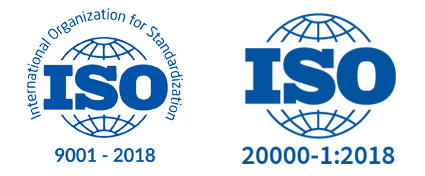How to Find Software Development Partner?
Can businesses these days function effectively without relying on software? Even small companies heavily rely on essential software such as accounting programs, CRM systems, and productivity tools to streamline operations and enhance productivity. Then, there are customized software solutions tailored to an individual’s unique needs. But again, can everyone afford what it takes to develop such software? And that’s one of the primary reasons for finding a trustworthy software development partner now.
In addition to the financial burden, developing software in-house can be a time-consuming process. Businesses need to navigate the intricacies of software development methodologies, project management, and quality assurance, which can divert their focus from their core competencies.
Why to have a software development partner?
Businesses today are under constant pressure to adapt and evolve with the changing customers’ demands and market conditions. In such an environment, having a reliable software development partner can be a game-changer. Here’s how:
- Access to specialized skills and expertise across various technologies, frameworks, and platforms
- Scalability to ramp up or down development capacity based on project demands
- Cost-effective solution compared to maintaining an in-house development team
- Faster time-to-market by capitalizing on the partner’s experience and proven methodologies
- Fresh perspectives and innovative solutions from industry experts
- Access to software development best practices, industry standards, and advanced technologies
What should you know before choosing a software development partner?
Scope of the project
Before looking for a software development company or team, it’s paramount to take a step back, analyze your project, and define its scope. Then, set goals for your project and establish milestones to achieve them. Also, define the objectives you aim to accomplish by executing the project.
Framing your project’s functional and non-functional requirements will give you a reference point to compare the current status of your project. However, if you have a rough idea and want to relieve yourself from requirement analysis, you can contact a group of business analysts.
An experienced and knowledgeable business analyst will help you in defining the project’s scope, functional and non-functional requirements and sketch rough mockups for projects.
2. Time frame
Associating a time frame with the project’s scope will help you define time-bound deliverables for your project. Sometimes it may also help you to take first-mover advantage. However, when associating time-frame, consider factors that may impact project’s duration such as bugs, errors, maintenance or upgradation of software, technical issues, and additional feature requirements. Aim for flexibility rather than a fixed duration!
You can reach out to a leading software development company. Their highly experienced project managers will help you determine your project’s time frame, and divide the whole project into time-bound deliverables, making it easier to track the progress.
3. Budget
Budget is one of the most critical aspects of your SRS (Software Requirement Specification) document. Every business has a dedicated budget for a particular project and desires to complete the project within the defined budget. However, a startup’s funding may differ from that of an enterprise-level company. So, knowing this aspect is crucial for businesses.
There are several factors that affect the budget of a software development project, including:
- Product complexity
- Tech stack
- Product design
- Product features
- Development team
- Target audience
- Support and maintenance
- Testing
- Technical debt
Expert business analysts can help you break down budget estimates per various features. They will also help you know the amount you need to invest for a minimum viable product (MVP).
4. Types of outsourcing
Once you define your project’s scope, time, and budget, the next step is deciding on outsourcing. There are multiple ways to outsource software development partners:
Staff augmentation
Staff augmentation involves hiring a software development partner for contracted time to augment your organization’s capabilities. The internal management generally oversees the hired staff, which works with the rest of the development team.
Despite its benefits, such as more project control, deadline flexibility, and better integration with internal processes, you also have to deal with its drawbacks. These include higher operational costs, significant training costs to get augmented staff familiar with internal processes, and great difficulty in scaling the project.
Project-based
For companies with tighter deadlines and the need to maintain daily business activities through IT solutions, project-based outsourcing can be an effective option. This approach offers benefits such as ease of project scaling, decreased management costs, access to specialized expertise, etc.
However, there are potential drawbacks to consider, such as less control over the project, and difficulty integrating with the internal system. Additionally, it may be less cost-effective for smaller projects.
If your enterprise level could benefit from project based outsourcing, consider partnering with a reputable digital product engineering company such as Mcbird.
With a focus on helping entrepreneurs shape and validate their product ideas, Mcbird offers software development outsourcing services that let you focus on strategy, business expansion, and profitability. Our engineering team owns the development cycle and helps you develop a product that aligns with your business methodology.
5. Location of outsourcing
After deciding the type of outsourcing, you should then decide on the location. The geographical location of the developers makes a massive impact on the outcome of your project. Language, time zone differences, and culture significantly impact day-to-day business activities.




